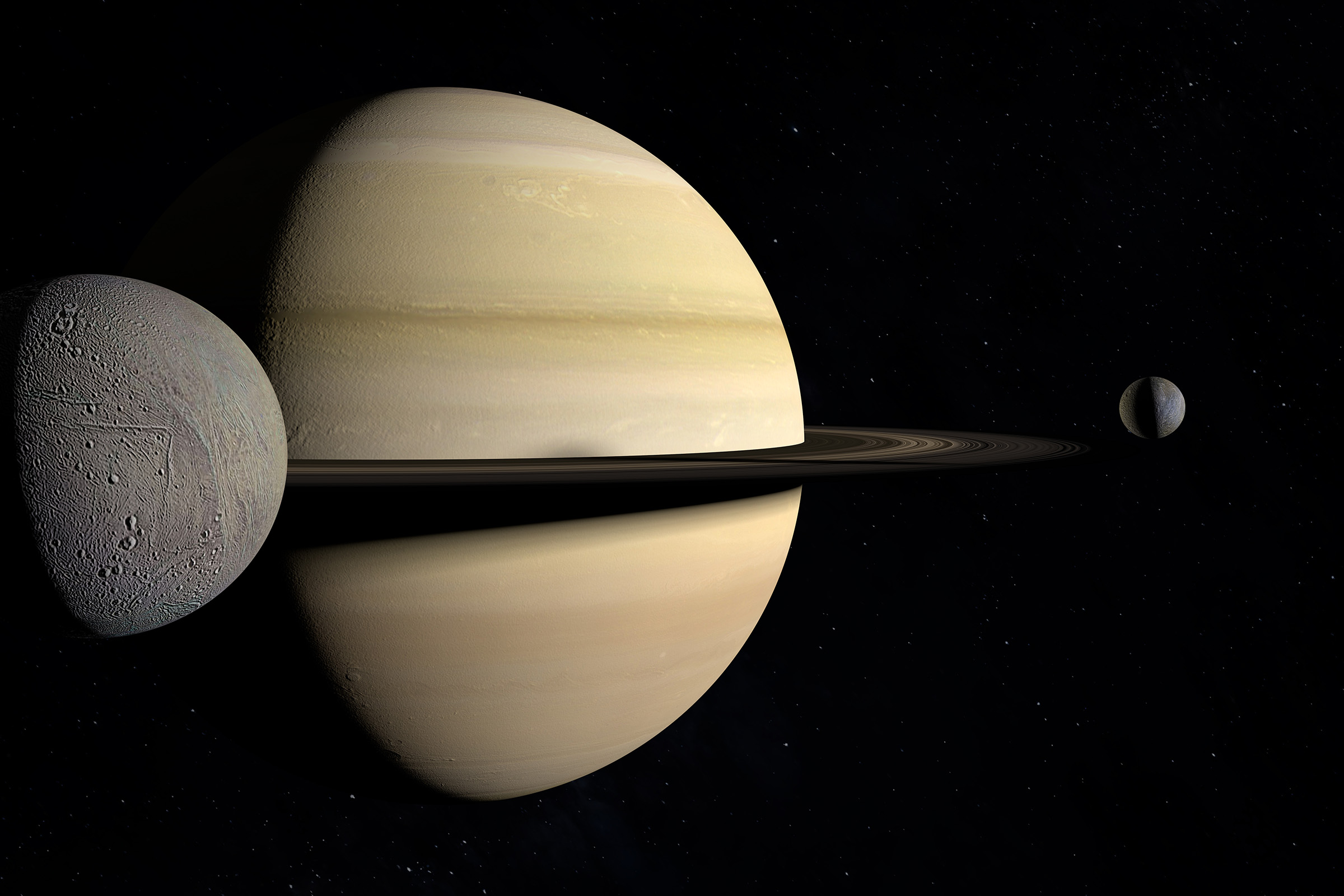Back in February, astronomers announced Jupiter had 12 more moons than previously believed, giving it the lead over Saturn with the most moons in the solar system. It seems that title is once again changing hands, though, as astronomers discovered 62 new moons around Saturn. That brings Saturn’s moon count to a total of 145 moons — over 50 more than Jupiter’s 92.
Jupiter is the largest planet orbiting our sun, so it made sense that it would also have the most moons orbiting it, too. However, Saturn wasn’t content to take second place in this cosmic toss-up, and the planet — though strange and mysterious — continues to hold its own really well in the ongoing feud to see who has the most moons.
Of course, the new Saturn moon count still has to be verified. However, if all the additional satellites that were discovered are verified and accepted, it will bring Saturn’s count up to 145, a far cry above Jupiter’s current 92 moons. Both planets have an insane amount of moons, though, more than any other planets in our solar system – or that we’ve discovered in the universe so far.

These new moons that scientists have discovered differ greatly from the lunar satellite we know from our night skies. While they may bring Saturn’s moon count up, they aren’t known for being luminous balls, these new moons are more like pieces of rubble or potatoes floating through space around the planets, according to The New York Times. It’s not unlike the small moons that orbit Mars and other planets.
The moons are believed to be remnants of old planets or cosmic objects that collided with other objects, the rubble and debris becoming locked in orbit around Saturn. Our own planet’s moon is believed to share a similar origin, though scientists haven’t quite locked down an exact cause for any of these cosmic bodies. Still, discovering additions to Saturn’s moon count is exciting.
It shows just how much our solar system still has to reveal and could help scientists calling for more planetary exploration without our own system rally more support to their side. Further, these additional moons continue to add more fuel to the arguments of what exactly constitutes a moon, a question that we will no doubt see astronomers coming to grips with over the next several years.







